 Nate Hohman is the feature of the Materials Research Society (MRS) podcast, MRS Bulletin. Laura Leay interviews Hohman about the structure of two chalcogenolates his group uncovered. By combining serial femtosecond crystallography —usually used to characterize large molecules—and a clique algorithm, Hohman’s group was able to analyze the structure of small molecules. With serial femtosecond crystallography, large molecules like proteins produce thousands of spots on the detector; in contrast, small molecule crystals only a produce a few spots. The algorithm uses the pattern that the spots make on the detector to determine the orientation of as many crystals in the liquid jet as possible. The data from each crystal can then be merged together to find the structure. Nate’s research is featured in the 2022 IMS Annual Newsletter.
Nate Hohman is the feature of the Materials Research Society (MRS) podcast, MRS Bulletin. Laura Leay interviews Hohman about the structure of two chalcogenolates his group uncovered. By combining serial femtosecond crystallography —usually used to characterize large molecules—and a clique algorithm, Hohman’s group was able to analyze the structure of small molecules. With serial femtosecond crystallography, large molecules like proteins produce thousands of spots on the detector; in contrast, small molecule crystals only a produce a few spots. The algorithm uses the pattern that the spots make on the detector to determine the orientation of as many crystals in the liquid jet as possible. The data from each crystal can then be merged together to find the structure. Nate’s research is featured in the 2022 IMS Annual Newsletter.
Faculty Research
Yang Cao in Collaboration on Project Funded by ARPA-E OPEN 2021
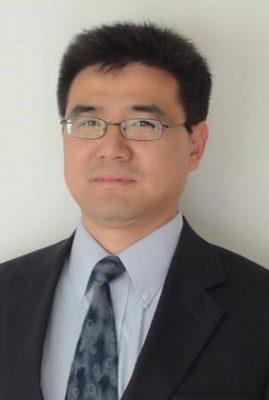
On February 14, 2022, ARPA-E announced $175 million for 68 OPEN 2021 research and development projects aimed at developing disruptive technologies to strengthen the nation’s advanced energy enterprise. These high-impact, high-risk technologies support novel approaches to clean energy challenges.
Associate Professor and Electrical Insulation Resource Center (EIRC) Director Yang Cao and fellow researchers from Virginia Polytechnic Institute and State University (Virginia Tech) will combine the functionality benefits of power electronics with the power density benefits of high-voltage cables to create a cohesive, all-in-one structure to replace bulky, inflexible power substations in today’s electrical grid. This “substation within a cable” design uses a cascade of coaxial power conversion cells to gradually step-down voltage to levels required by the loads. Virginia Tech’s module can achieve high power density and a form factor that enables seamless integration with the cable by mimicking a coaxial geometry design. This could eliminate the need for large and expensive power substations and enable simple integration of renewable energy sources, an electric vehicle fast-charging infrastructure, energy storage, and efficient direct current distribution lines.
The research project, Substation in a Cable for Adaptable, Low-cost Electrical Distribution (SCALED) has received $2,953,389 in funding support through the ARPA-E OPEN 2021 initiative.
Xueju “Sophie” Wang Receives NSF CAREER Award
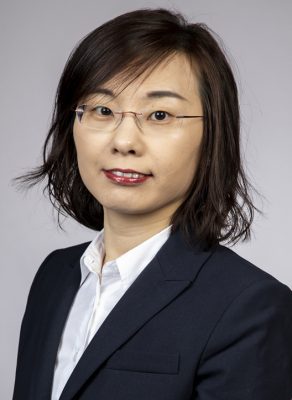 MSE Assistant Professor Xueju “Sophie” Wang has been awarded the NSF Faculty Early Development Program CAREER Award for her proposal entitled “Mechanics of Active Polymers and Morphing structures: Determine the Role of Molecular Interactions and Stiffness Heterogeneity in Reversible Shape Morphing.” It is one of NSF’s most prestigious awards.
MSE Assistant Professor Xueju “Sophie” Wang has been awarded the NSF Faculty Early Development Program CAREER Award for her proposal entitled “Mechanics of Active Polymers and Morphing structures: Determine the Role of Molecular Interactions and Stiffness Heterogeneity in Reversible Shape Morphing.” It is one of NSF’s most prestigious awards.
Wang’s NSF CAREER award will support her research on fundamental studies of the mechanics of innovative active polymers and morphing structures. Soft active polymers that can change their shapes and therefore functionalities upon exposure to external stimuli are promising for many applications, including soft robotics, artificial muscles and tissue repair. This research project aims to establish the missing correlations across the molecular, material and structural levels of novel active polymers for their rational design, manufacturing and applications, by using liquid crystal elastomers as a model material system.
“I am very grateful and honored to receive this prestigious award, and I look forward to working with my students to address challenges in innovative active polymers and to apply them in emerging fields like soft robotics,” Wang said.
Read the full Department of Materials Science and Engineering Story
Rajeswari Kasi to Serve on Editorial Board of Micromolecules
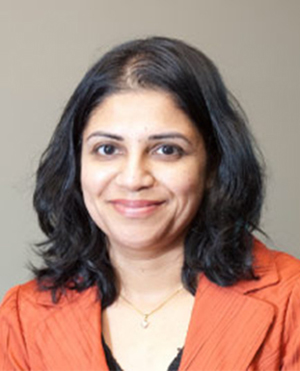
Professor of Chemistry Rajeswari (Raji) Kasi has accepted an appointment to the editorial board of Macromolecules, a peer-reviewed scientific journal published by the American Chemical Society. The publication was first published in 1968 on a bi-monthly basis but has, over the years, moved from monthly to bi-weekly publication.
Kasi’s research encompasses all aspects of materials design including synthesis of hierarchically structured polymers and polymer-hybrid materials with tailored architecture, functionality, and composition; investigation of self-assembly and structure at various length scales; and evaluation of unique macroscopic material properties. She will serve a three-year term on the editorial board.
IMS Faculty Members Receive Department of Education GAANN Award
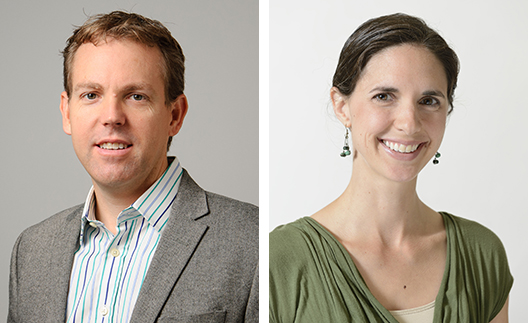
Drs. Bryan Huey (IMS/MSE) and Lesley Frame (IMS/MSE) are recent recipients of the Department of Education (ED) Graduate Assistance in Areas of National Need (GAANN) grant.
Drs. Huey and Frame collaboratively applied for the award which provides fellowships, through academic departments and programs, to assist graduate students with excellent records who demonstrate financial need and plan to pursue the highest degree available in their course study at the institution in a field designated as an area of national need.
Their Careers in Advanced Materials Engineering Research and Academia (CAMERA) GAANN program will provide world-class educational, research, advising, and professional training experiences and opportunities, beyond MSE courses and laboratory research taught by established experts in a range of materials engineering specialties. They will utilize the funding to support five Ph.D. fellowships focusing on increasing the number of highly trained Ph.D. scholars from populations traditionally underrepresented in STEM.
Drs. Huey and Frame plan to provide primary and secondary faculty advisors for candidates selected for the fellowship. Each Fellow will earn credits through a novel ‘Academia Lab’ created by MSE in conjunction with the school of engineering and the UConn Center for Excellence in Teaching and Learning in order to incorporate instruction and workshops in educational pedagogy and practice, scientific writing and presenting, and mentorship skills.
The grant of ~$760K will be supplemented by funding from the School of Engineering, the Office of the Vice President for Research, the Office of the Provost, and The Graduate School.
Research Project Aims to Eradicate Use of Harmful Gas
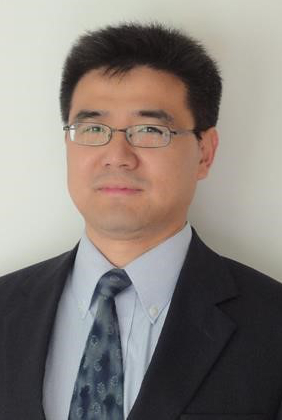 The gas sulfur hexafluoride (SF6) has been keeping our electrical grid safe from dangerous arcing and explosions since its introduction to the public in the 1930s. Developed in a General Electric lab, sulfur hexafluoride is one of the most widely used insulation gases by electrical utility companies because of its reliability and safety, but remains relatively unknown by the general public.
The gas sulfur hexafluoride (SF6) has been keeping our electrical grid safe from dangerous arcing and explosions since its introduction to the public in the 1930s. Developed in a General Electric lab, sulfur hexafluoride is one of the most widely used insulation gases by electrical utility companies because of its reliability and safety, but remains relatively unknown by the general public.
Starting in the 1960s, as greenhouse gases and their effect on the environment became more widely known, sulfur hexafluoride has been identified as one of the largest causes of global warming. While most educational and legislative efforts have been focused on CO2, or carbon dioxide, emissions as a big offender, sulfur hexafluoride has flown under the radar despite its staggering global warming potential: 25,200 times that of carbon dioxide.
Because of that, University of Connecticut Electrical and Computer Engineering Professor Yang Cao has been selected to receive $2.7 million in funding over three years from the U.S. Department of Energy’s Advanced Research Projects Agency-Energy (ARPA-E) to develop a lifecycle management framework, with innovations in physics based aging modeling, aging byproducts fixation, and a low-cost, high-fidelity multi-gas leak sensor with GE Research, to help utilities make a smooth transition to a new, SF6– free electrical grid. Read the full UConn Today story.
Dr. Heidi Dierssen is Conducting Research to Improve Remote Sensing of Microplastics on the Ocean’s Surface
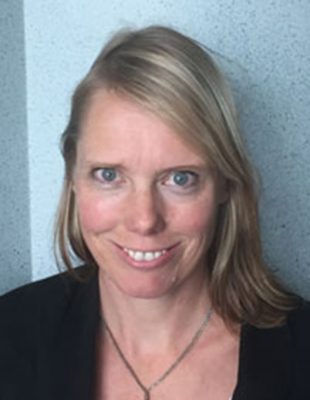 Professor of marine sciences and geography, Heidi Dierssen, has received a nearly $577,000 grant from NASA to study better methods for remote sensing of surface microplastics using satellites. The project will involve a collaboration with a visual artist to advance community understanding of this problem.
Professor of marine sciences and geography, Heidi Dierssen, has received a nearly $577,000 grant from NASA to study better methods for remote sensing of surface microplastics using satellites. The project will involve a collaboration with a visual artist to advance community understanding of this problem.
Dierssen’s lab, Coastal Ocean Lab for Optics and Remote Sensing (COLORS), conducted previous research on the optical properties of microplastics, providing the necessary background information to determine the best approaches for remote detection. Understanding the optical properties of microplastics is the first step in determining whether satellites can detect and quantify floating microplastics from space.
Dierssen has assembled a diverse scientific team of experts from NASA Goddard Space Flight Center, Colombia University, University of Maryland, Baltimore County, and Terra Research Inc.